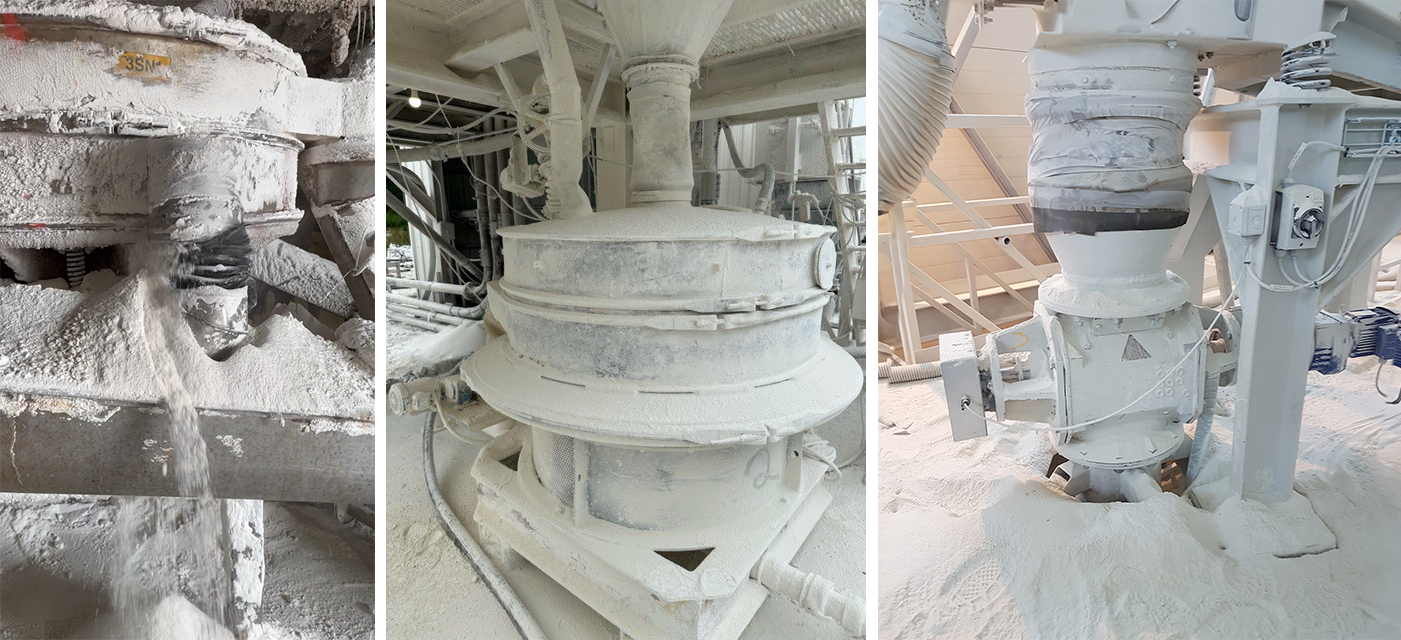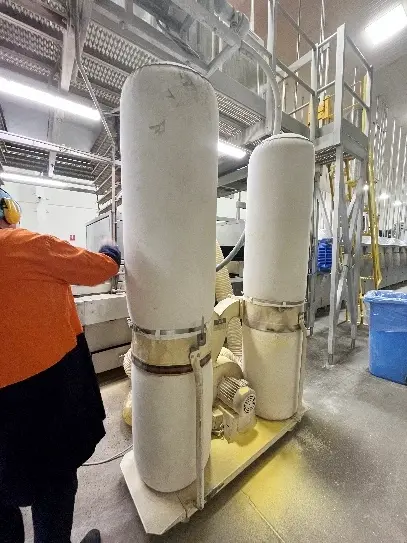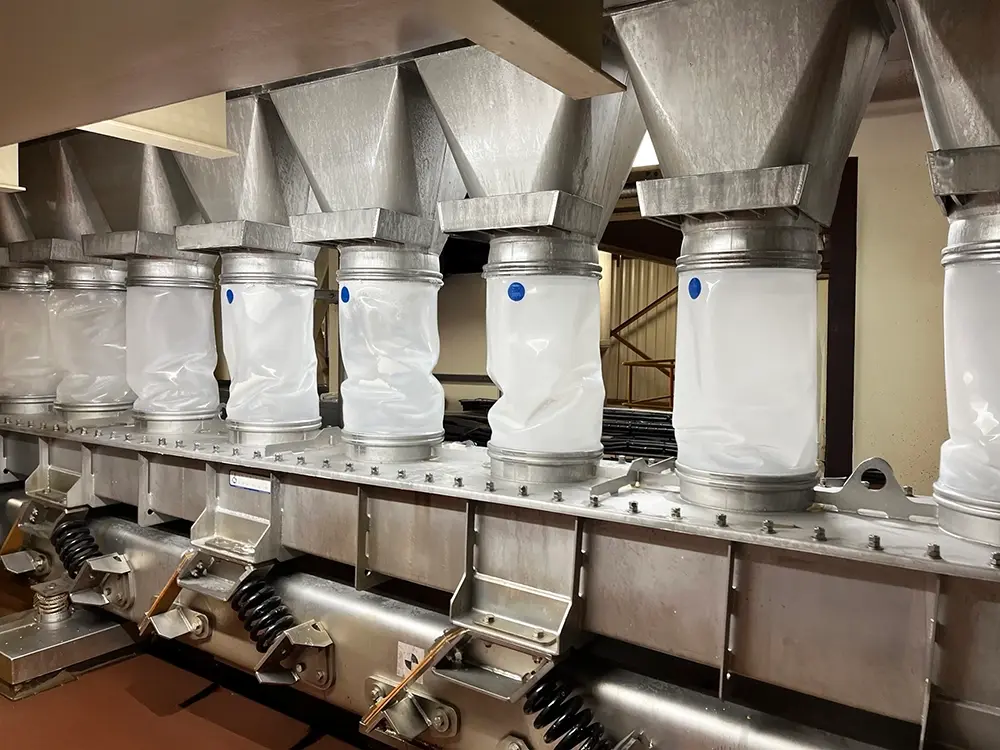Bulk bags, FIBC’s, jumbo bags, super sacks and big bags – they’re all terms used to describe the large, industrial-grade bags commonly used to store and transport dry, flowable materials.
Whilst the simple act of filling a bag with product sounds quite straightforward, for bulk processors, bulk bag filling can in fact be fraught with considerable health and safety challenges. The two most notable issues being dust control and hand safety for operators.
The Importance of Dust Control
 In any manufacturing facility, the presence of dust in the environment is a major concern. Dust not only affects air quality for staff but also poses a risk of fire and explosion, particularly with combustible materials.
In any manufacturing facility, the presence of dust in the environment is a major concern. Dust not only affects air quality for staff but also poses a risk of fire and explosion, particularly with combustible materials.
Bulk bag unloading and loading is probably the biggest single generator of dust in many plants: the physical process of transferring large quantities of bulk products in a short time naturally leads to a substantial amount of displaced air, resulting in process dust.
If not effectively managed, this dust can escape from the bag connections into the production environment, presenting serious risks, including combustible dust explosions and health hazards for operators.
As such, it is essential to integrate effective dust collection or venting systems into bulk bag-filling processes. These systems provide an outlet for displaced air, allowing for continuous product flow while minimizing dust leakage.
However, despite the implementation of dust collection systems, leakage remains a persistent issue in bulk bag loading. The seals around the neck of the bag—where it connects to the filling head—are rarely airtight, leading to potential dust escape.
 Fitting Bulk Bags – Hands Often at Risk Due to Pinch Points
Fitting Bulk Bags – Hands Often at Risk Due to Pinch Points
Bulk bags are usually manually pulled up to a filling head and fastened in place, either with clamps or via an inflatable filling head.
Clamp systems pose considerable safety risks for operators with the process of positioning the bag neck correctly and fastening the clamps risking pinched fingers and other injuries. Operators must manage both the bag and the clamps simultaneously, increasing the risk of accidents.
Many bag-loading systems now offer inflatable filling heads, but these sometimes require bars or cages to maintain the neck's position during inflation. This creates additional pinch points that can also jeopardize operator safety.
Filling Head Design Holds the Key
The overall design of a bulk bag filling station will largely depend on your process set up, but one of the most important factors in reducing these two common safety issues is choosing the right filling head.
A bulk bag filling head needs to be fast and easy to use but, at the same time, be very safe for the operator’s hands. It also needs to be effective at sealing 100% securely the neck of the Bulk Bag so that there is no possibility of dust leaking out into the factory during filling.
Clamped Systems
Many traditional bulk bag loading systems utilize clamp-style mechanisms to hold the neck of the bag against the filling head. While this method offers flexibility for different bag sizes, it often fails to create a secure, airtight seal.
When the neck of the bag is larger than the feeding head, the folds of the material can create additional opportunities for dust to escape.
Inflatable Filling Heads
To enhance sealing and reduce dust leakage, many manufacturers have turned to inflatable filling-head systems. These systems feature an inflatable bladder that expands against the inside of the bag neck, effectively sealing off gaps. While this solution improves dust control, it is not without its drawbacks.
Many inflatable seals are very prone to wear and tear over time due to repeated inflation and deflation, as well as contact with rough materials or abrasive environments. This can lead to leaks, reduced sealing effectiveness, and frequent maintenance or replacement.
Both clamped loaders and inflatable systems that use hose clips to secure their rubber bladders pose a contamination risk. Components from these fastening systems can fall into the product, leading to contamination.
 A Safer, Cleaner, More Efficient Alternative
A Safer, Cleaner, More Efficient Alternative
Recognizing the limitations of traditional systems, BFM® introduced its own innovative solution: the BFM® Bulk Bag Loader.
Utilizing BFM®’s renowned snap-fit connector & spigot system, combined with the strength and flexibility of BFM®’s Seeflex polyurethane, the BFM® Bulk Bag loader is a fully sealed, inflatable filling head designed for efficiency and safety.
 Design and Functionality
Design and Functionality
The BFM® Bulk Bag Loader consists of a three-layered inflatable filling head that easily snaps into a BFM® spigot welded to the outlet chute. It features a central stainless-steel core fully encased in BFM®'s robust and flexible Seeflex urethane, designed to withstand the rigours of industrial use.
An external flexible air-fitting tube connects to a standard 8mm pneumatic airline, allowing the outer Seeflex layer to inflate quickly and securely hold the bag neck open. This design eliminates the need for clamps, bars, or cages, effectively removing any possible pinch points and providing superior safety for operators.
 Enhanced Dust Control
Enhanced Dust Control
The BFM® fitting system creates a superior seal that securely holds the neck of the bulk bag open, ensuring no leaks during the loading process. Additionally, the system features a built-in pressure relief valve, set at 6psi, to help prevent over-inflation of the bladder. This attention to detail not only enhances operational efficiency but also safeguards product integrity.
Once loading is complete, the outer sleeve can be instantly deflated, allowing for easy bag removal. This streamlined process not only improves productivity but also minimizes the potential for dust escape.
Durability and Maintenance
The BFM® Seeflex urethane is significantly stronger and more flexible than traditional silicone or rubber materials, which tend to degrade after multiple uses.
The BFM® Bulk Bag Loader has been tested to last well in excess of 1,000,000 inflations. This durability translates to reduced maintenance costs and less frequent replacements.
The snap-fit connection of the BFM® fitting simplifies the removal, cleaning, and replacement process compared to conventional connectors and filling heads. This ease of use contributes to more efficient operations and better adherence to hygiene standards.
BFM® Bulk Bag Loader is the Cleaner, Safer Option
Efficiently filling bulk bags while controlling dust is a critical concern for manufacturers. Traditional systems often struggle with sealing and operator safety, leading to dust leakage and potential contamination.
By combining enhanced sealing capabilities with a user-friendly design, the BFM® fitting system not only mitigates dust control challenges but also prioritizes the safety and well-being of operators.
Watch a demonstration of the BFM® Bulk Bag Loader vs a traditional clamped bag loader :
Visit the Bulk Bag Loader Product Page or download the Bulk Bag Loader Spec Sheet.



